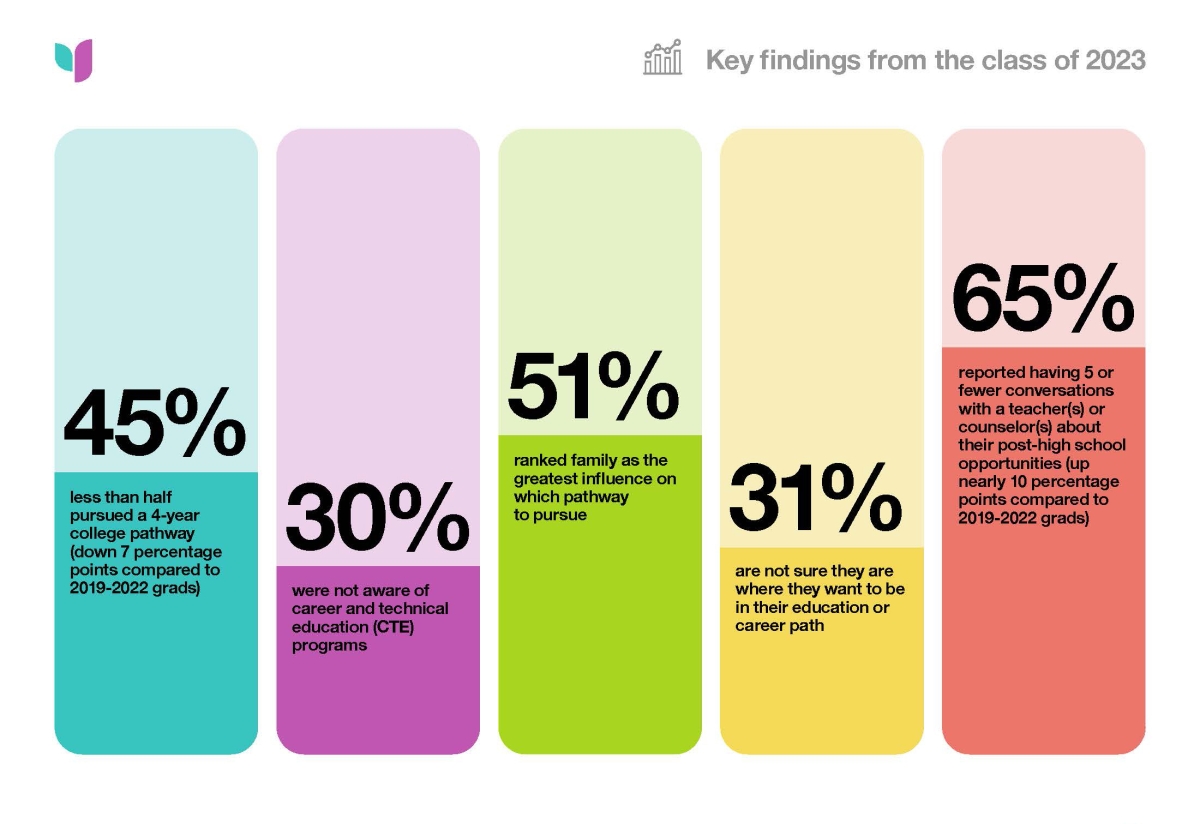The turn of a year is a good time for reflection, especially when it comes to CTE programs. In this article, we look at recent survey data from students about CTE and how their answers point to the surest ways to strengthen your program. Specifically, we looked at the “YouScience 2023 Post-Graduation Readiness Report: Education at a crossroads.”

YouScience, a technology provider dedicated to solving the skills and exposure gap crisis for students and employers, surveyed more than 500 students from the classes of 2020-2023. Above (see graphic), you can see the survey’s key findings. It also showed that 15 percent of students had “no plan” or were “taking time off.”
In addition, 83 percent of 2023 graduates said they would have been more engaged in learning had they understood their aptitudes and opportunities. What solutions do these findings point to? And how is Wisconsin addressing these findings?
- “Aptitude and interest assessment. The report recommends using a science-based aptitude and interest assessment to help students discover their best-fit postsecondary education and career pathways.”
K-12 schools can benefit from considering survey information provided by a number of vendors in this sector. K-12 schools in Wisconsin have no-cost access to Xello, which includes an interest assessment.
2. “Collaborative planning. Involve family, educators, and counselors to help students plan their courses. Working in concert with family, educators, and counselors, students can apply their own aptitude knowledge to plan courses, obtain beneficial certifications in select CTE courses, and be better prepared to enter the workforce or pursue a degree suited for their skills.”
This recommendation speaks directly to the Education for Employment/ACP statute that requires family engagement as a part of the ACP process. Turn to Wisconsin's Guide to Publishing Your District's ACP/E4E Plan for guidance.
3. “Education-to-career tools. Provide counselors and teachers the resources to help create personalized plans for postsecondary education and training based on student aptitudes and interests.”
4. “Career-connected learning. Connect students to real-world training.”
In Wisconsin, Academic and Career Planning (ACP) is squarely aimed at these two recommendations. The Wisconsin Guide to Implementing Career-Based Learning Experiences offers a wide range of tools that can be used in grades K-12 to get students thinking about careers. In addition, career-connected learning helps students understand how core content areas apply to various careers. It provides relevance and instant engagement.
5. Interdisciplinary teaching
6. Industry-recognized certifications
7. Work-based learning, internships, and apprenticeships
Wisconsin employees all of these last three recommendations in creating career pathways. The CTE elements of a career pathway include:
- Taking a sequence of aligned courses,
- Earning an industry-recognized credential,
- Enrolling in dual college credit classes,
- Participating in career-based and work-based learning experiences, and
- Accessing related career and technical student organizations
If you are looking for ways to deepen your CTE program, consider implementing one of the regional career pathways that have been vetted by regional employers.
The DPI’s own learner voice survey found that students want more career readiness, and they want it to start earlier. Let’s listen and see where it gets us.
Front page image wayhomestudio on Freepik.